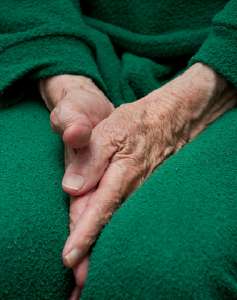FRIDAY, 6 JUNE 2014
We tend to be particularly curious about centenarians live – how have they survived so long, and are there any lessons to be learned from their lifestyles? But Catherine Evans and colleagues at Kings College London are also interested in their deaths. In a recent study, published in PLOS Medicine, they examined how and where centenarians die.The research was done to help healthcare professionals and policy-makers to determine how best to meet the needs of very elderly patients. The elderly tend to get increasingly frail with age, so it is important to determine the specific health concerns for this growing and resource-hungry demographic.
The researchers conducted an observational study, analysing data from the Office for National Statistics about the deaths of 35,867 UK centenarians from 2001 to 2010. They also linked the places of death with information about deprivation in that area and the capacities of its nursing homes.
The results showed that the more deprived an area, the fewer centenarian deaths occurred during the study period – presumably because the deprivation ensured that fewer people lived long enough to become centenarians. As for the causes of death according to death certificates, the group found that outside of the hospital, the most common stated cause was old age, although inside the hospital, it was pneumonia – making it likely that the centenarians were moved to hospital to treat this condition when it developed. Overall, 75.6% of death certificates listed ‘old age’ as an underlying or contributing cause, although the researchers noted that this may sometimes be stated in part to provide comfort to relatives.
Interestingly, the centenarians were relatively less likely compared to the ‘younger elderly’ to die from cancer and heart disease, the two of the main killers in England. Whilst avoiding these, it appeared that they grew increasing frail and susceptible to the lung infections which eventually killed them. The authors suggest that “centenarians are a group who have outlived chronic diseases common as causes of death amongst ‘younger’ older cohorts … [instead] dying in hospital from an “acute” cause or stressor event”.
Only 9.6% of centenarians died at home, which is a concern given that most elderly people state that they wish to die at home or in a ‘homely’ environment. The majority died in nursing or residential homes, though over a quarter died in hospitals. More than half of centenarian deaths were in places other than their usual residence (suggesting that a rapid decline in health led to them being moved for better care provision before they died). Such a high proportion of centenarians dying in hospital and outside their usual residence is unusual compared to many other European countries, and the findings suggest that current long-term care is not always adequate for centenarians. The authors hope these finding will encourage care providers to plan better for the likely increases in very elderly adults requiring their services long term, and to be aware of the special needs of this particularly vulnerable age group.
Full paper available at:
http://www.plosmedicine.org/article/info%3Adoi%2F10.1371%2Fjournal.pmed.1001653
Sources:
1http://www.ons.gov.uk/ons/rel/mortality-ageing/population-estimates-of-the-very-elderly/2010/sum-eve-2010.html


